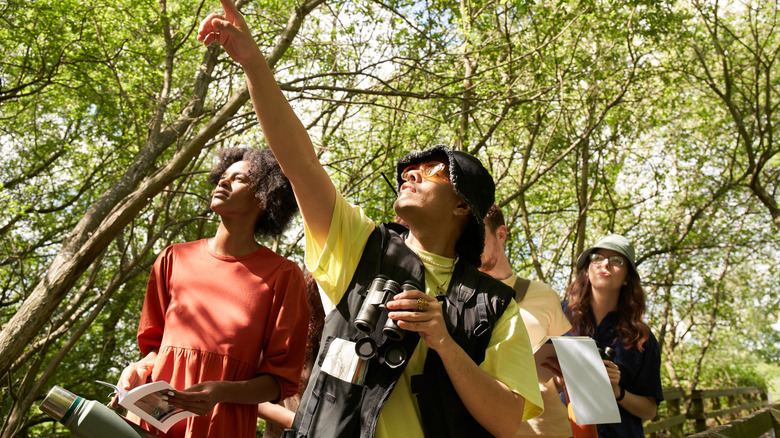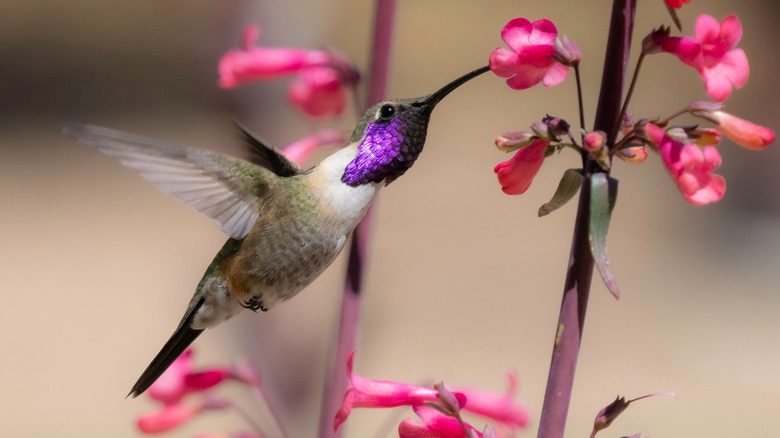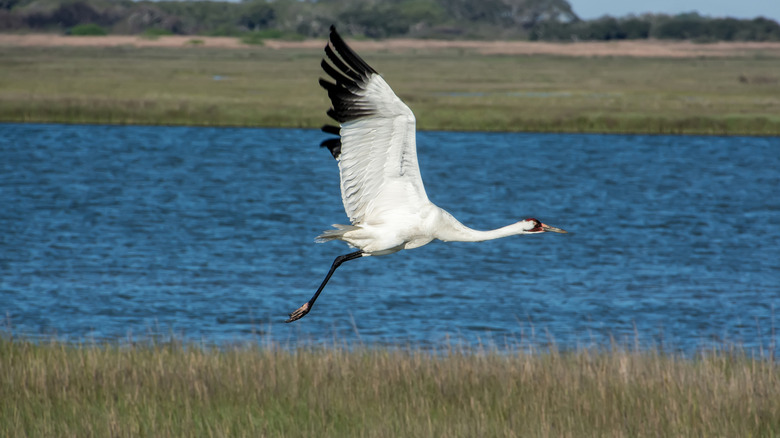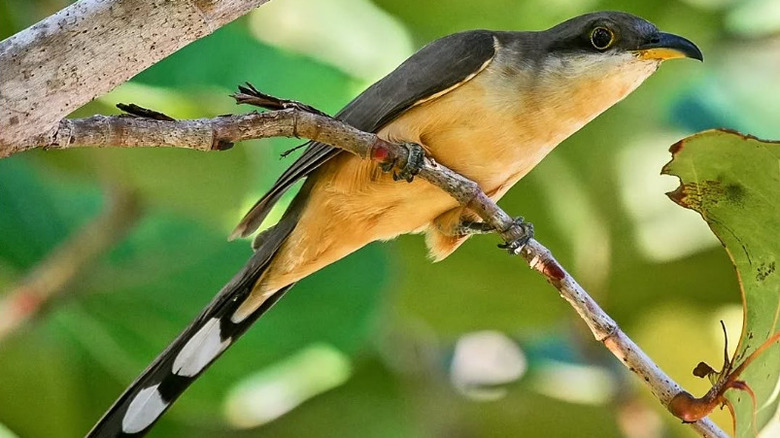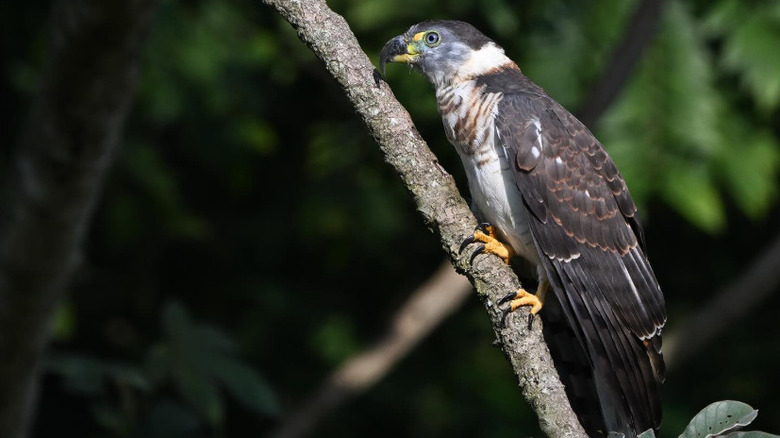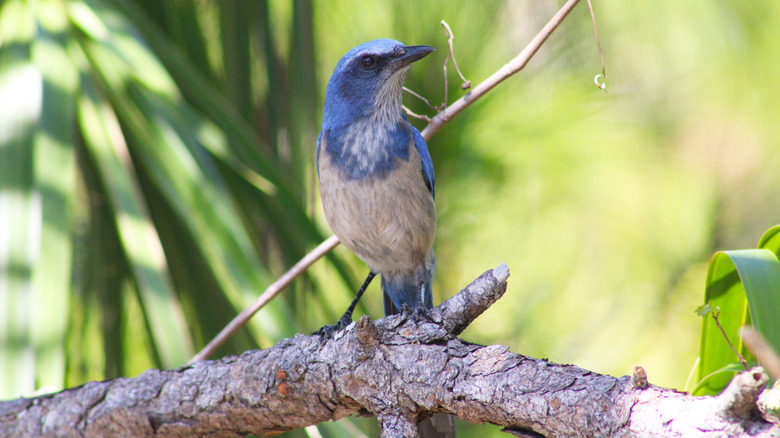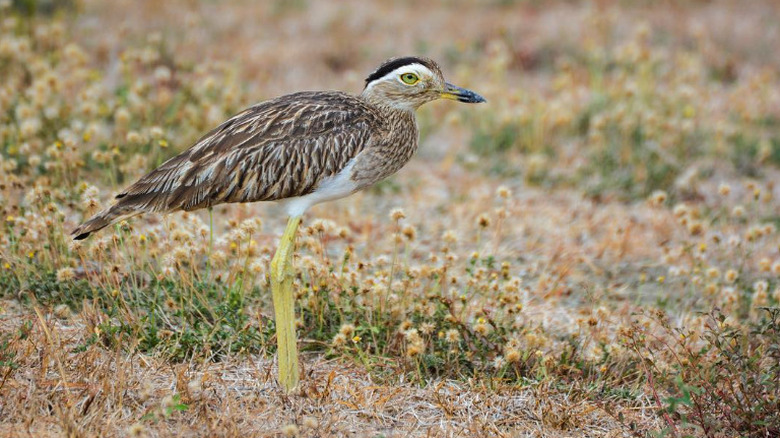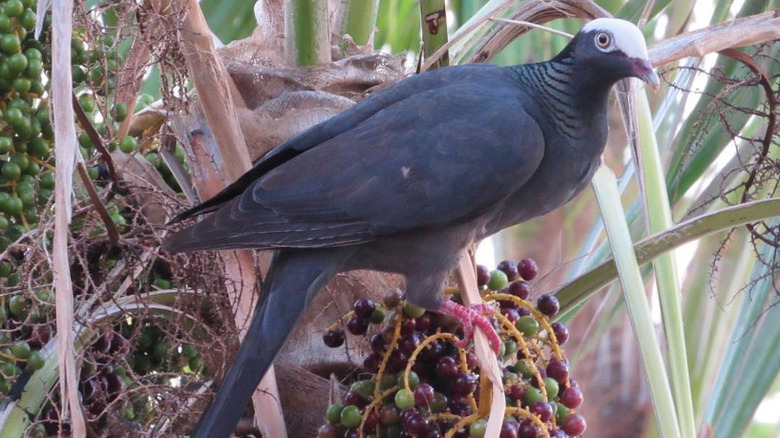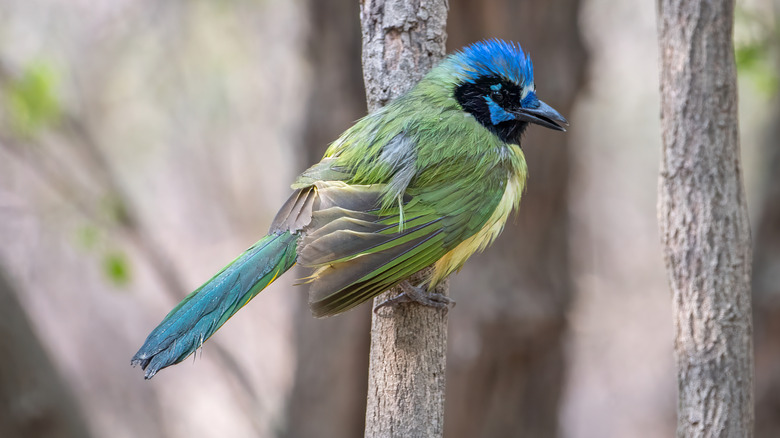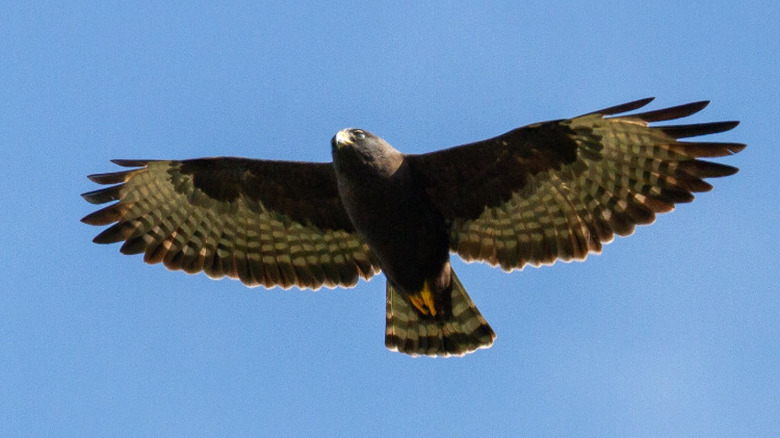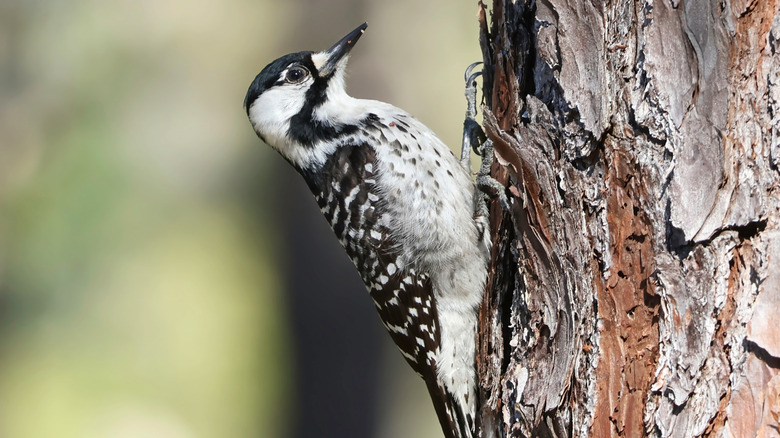10 Beautiful Rare Birds You'll Likely Only Find In Southern United States
If you have implemented birdscaping tips to turn your yard and garden into a bird haven, you probably have a front-row seat to all kinds of avian critters. You may be overly familiar with visiting songbirds like cardinals, chickadees, and robins. Or perhaps you've spent your morning watching woodpeckers and ruby-throated hummingbirds flit around your garden. You may have spotted some birds you do not want to see in your yard, like grackles and brown-headed cowbirds. Depending on where you live, if you're itching to see birds beyond the usual suspects, you may have to travel to places in the southern U.S. like Texas and Florida. There, you can encounter rare and unusual birds that do not often leave the confines of their home states.
For migrating birds, like the Lucifer hummingbird, the American South offers a temporary summer or winter home. But some rare species, such as the Florida scrub-jay and the white-crowned pigeon, can only be spotted in select southern states. That's because places like Texas and Florida offer rare avians a range of bird-friendly ecosystems with shelter, food, and other resources. On the other hand, a few bird species may end up in the South by accident, blown off course by storms and other weather events. For example, in September 2025, a double-striped thick-knee was spotted on private land in Texas for the first time in over six decades. Habitat loss and other factors mean some birds, like the red-cockaded woodpecker, may be hard to see due to population decline. Other avians are simply elusive: they like to shelter or nest in impenetrable locations.
Lucifer hummingbird
If you want to catch a glimpse of a Lucifer hummingbird, you'll have to travel down to places like Big Bend National Park in western Texas. Around the size of a sparrow, this hummingbird is defined by its long, curved bill. You can tell a male Lucifer by its jewel-like purple throat. A migrant species from northern and central Mexico, these hummers usually travel to southern Mexico for the winter, after spending their summers in Texas, New Mexico, and Arizona. Fans of arid environments filled with cacti, they usually dwell in desert canyons and hillsides.
Whooping crane
The tallest bird in North America, whooping cranes can reach 5 feet tall with an almost 8-foot wingspan! They are nearly all white, except for the black tips on their primary feathers and slender, black legs. A bare red skin patch covers the top of their heads. The whooping crane narrowly avoided extinction in the 1940s. However, it's still an endangered species since only about 370 remain in the wild. Whooping cranes tend to spend their winters at the Aransas National Wildlife Refuge in Northeast Texas before heading back to Canada to nest for the summer.
Mangrove cuckoo
Mangrove cuckoos are considered one of the hardest-to-spot North American birds for two reasons. One, these birds are fond of dense mangrove swamps. Two, they do not make a sound unless it is breeding season. Outside the Caribbean, Central, and South America, you are most likely going to encounter these tropical birds along Florida's southern coasts. These cuckoos boast shades of brown, yellow, or gray plumage with a black-and-white polka-dot pattern on the underside of their tails. A large bird with a thick, curved bill, mangrove cuckoos can reach a bit over 12 inches long.
Hook-billed kite
Mostly found near wooded streams and rainforests across South America, the hook-billed kite is a tropical raptor defined by the yellow and orange spots dotting its face and bill. It was first spotted in South Texas in 1964. Since 1975, it has called this area home. These hawks stand 5 to 17 inches long and have a 33-inch wingspan. A big fan of tree snails, they forage around canopies on the hunt for treats, which can make them hard to see. If you want to try your luck spotting them, go to the Rio Grande between Falcon Dam and Santa Ana.
Florida scrub-jay
Did you know that you'll only find this beautiful blue bird in Florida? Defined by its black, blue, gray, and white feathers, the Florida scrub-jay lives in scrublands found near former dunes and ridges in coastal and central Florida. Unfortunately, due to habitat loss caused by overdevelopment, this scrub-jay is on the federal endangered species list. There are fewer than 10,000 birds left in the state. Florida scrub-jays are sedentary, rarely leaving the area where they were hatched. Plan a visit to Merritt Island National Wildlife Refuge if you want to spot a scrub-jay.
Double-striped thick-knee
In September, the double-striped thick-knee made an appearance in Texas for the first time in 64 years. It's very rare to spot this bird in the U.S., since it's native to many areas in Central and South America, such as Mexico, Costa Rica, and Guyana. This thick-knee is known for its long legs and neck, big yellow eyes, and short bill. Adults grow 18 to 20 inches long and weigh almost 28 ounces. This odd avian likes grasslands and dry, open pastures, though it's technically a shorebird. Double-striped thick-knees are active at night, using that time to hunt for food.
White-crowned pigeon
Bird-watchers must travel to South Florida to encounter the classy white-crowned pigeon. These slate-gray birds have a brilliant white cap on their heads and reach 14 inches long with a wingspan of 23 inches. Known for their extreme skittishness, white-crowned pigeons usually dwell in mangrove and wooded forests on offshore islands like those in the Florida Keys. Fast fliers, they can travel over 30 miles a day in search of fruiting trees on the mainland. If you're lucky, you might see them feeding at Everglades National Park during spring and summer.
Green jay
Green jays are defined by their vibrant plumage, featuring shades of green, blue, and yellow. About 12 inches long, green jays are found in Texas, inhabiting woodlands, thickets, and parks. Beyond Texas, they can also be found in Mexico, Guatemala, Belize, and Honduras. Every year, bird-watchers from across the globe travel to the Rio Grande Valley to watch these gorgeous birds. Recently, though, green jays have been observed moving north to areas like Corpus Christi, Uvalde, and Medina. Part of the corvid family, which includes ravens, crows, treepies, and magpies, green jays are known to be incredibly smart.
Short-tailed hawk
Only about 500 short-tailed hawks live in the U.S. This small tropical hawk is found near the edges of woods in central Florida. In addition to its small population, this bird can be very hard to spot since it does not perch in the open. It also soars to great heights while hunting for food, which makes it difficult for bird-watchers to see it. This raptor is 16 inches tall and 35-inch wingspan and has two types of underplumage: black or white. In winter, you can usually spot it in Key West and Everglades National Park.
Red-cockaded woodpecker
Despite the name, red-cockaded woodpeckers are defined by their black-and-white feathers with distinct spots and ladder-like patterns. Their heads are marked by large, white cheek patches. You can find these woodpeckers making a home within older pine trees. Growing to 7 inches long with a 15-inch wingspan, this rare bird was once common in the southeastern U.S. Sadly, it is now an endangered species due to fire suppression and the overcutting of pine forests. You can try to spot this bird in various wildlife refuges and national forests in North Carolina, South Carolina, Louisiana, and Florida.
